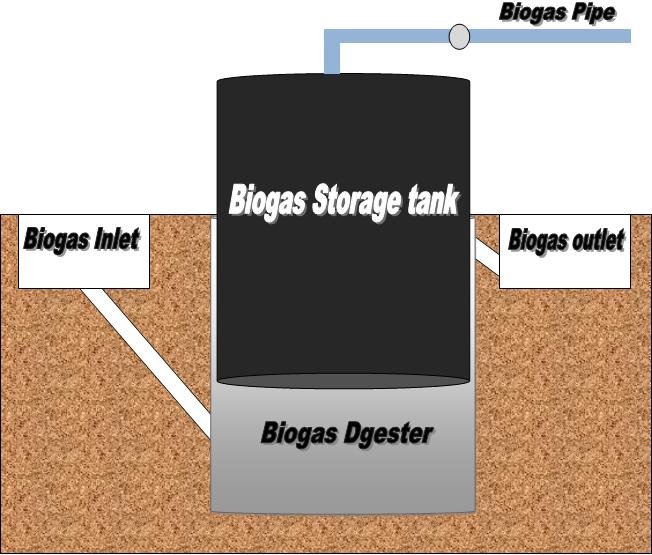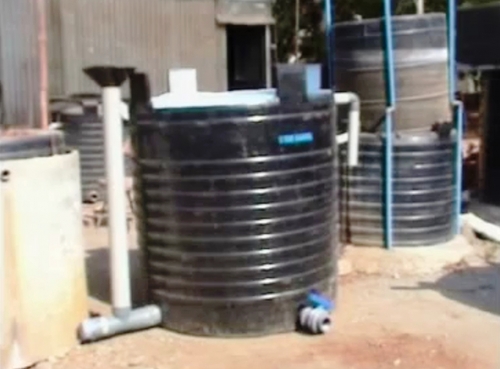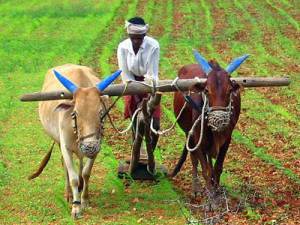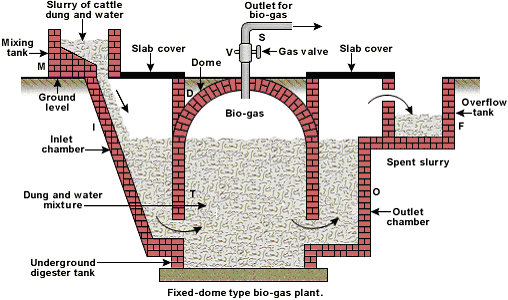The compact biogas plant
The compact biogas plant many rural household used biogas as cooking
food the tradition of domestic biogas plant require a daily input of
forty kilograms of dung mixed about forty litter of water it takes about
forty days for the dung to start producing biogas in order to
accommodate the daily input of forty kilo gram dung and retaining it in
to plant for forty days requires of plant having of very large capacity
up about four cubic meters because of the large size such a plant
requires a lot of space and it cost also high because of the moving
populations of cattle the availability of animal manure has declined
causing many of the existing biogas plants stop operation.
Related Posts
Construction of Portable Biogas Digester
VACVINA biogas Plant information and Construction Video
Building of Biogas Plant by Recycled Plastic Drum
Biogas Digester Photos
Arti biogas plant
Appropriate rural of technology institute (arti) has developed new
compact biogas system which is very easy to use. This biogas plant’s
works on starchy sugary cellulose or fatty substances. One can use non
vegetable oil seeds like pongamian, neem, caster, damaged or override
fruits, grains, flour mill wastes, fruits of vaecas non animal risen of
banana peel, or any other substance related feedstock, the feedstock
must be closed grand and applying to the biogas plant. After mixing it
with the about five to ten liters of water about one to one in half
kilo gram of starchy material would yield sufficient gas to cook the
meal is about four to five persons the amount of gas generated everyday
depends upon the capacity of the fermenter or bio gas digester and gas
holder fermenter capacity
Five hundred litters gas holder capacity four hundred available gas tow hundred and fifty liters duration of burning one hour
Digester capacity one thousand litters’ gas holder capacity seven
hundred fifty litters available gas 700 litter and duration of burning
two hours
Digester capacity two thousand five hundred letters
Gas holder capacity two thousand litters
Available gas one thousand seven hundred and fifty litters and duration of burning five hours
There are various ways which this biogas plants can be fabricated
this arti biogas plant has been fabricated that the help of tow plastic
tanks this one has a cement concrete tank has the fermenter or digester
and the plastic tank has a gas holder.
This third model tank has tank made by sheet metals. Although the
fermenter tank made of different materials the gas hold tank always made
of plastic.
How to make a Biogas plant digester by 1000 litter of water tank and gas holder tank 750 litter
Material required
- 1st 1000 litter Black colored molded plastic tank
- 2nd 7500 litter Black colored molded plastic tank
- 90 millimeter T one piece PVC
- 90 millimeter female adapter 1 piece PVC
- 90 millimeter male adapter 2 piece PVC
- 90 millimeter cap 1 piece PVC
- 2 meter 90 millimeter diameter 1 piece PVC Pipe
- Elbow 63 millimeter 1 piece
- 60 millimeter male adapter 2 piece PVC
- 60 millimeter check nut 1 piece PVC
- 63 millimeter PVC pipe 90 centimeter long
- 12.5 PVC mail adapter 1 piece
- 12.5 Millimeter iron elbow
- Epoxy risen and hardener
- PVC cement Solution
- Biogas Stove
- PVC valve 50 millimeter dia
- And tools
- 90 millimeter barrel piece
- 63 millimeter barrel piece
- 50 millimeter barrel piece
- 12.5 millimeter barrel piece
Construction of ARTI Compact Biogas Plant
First Take the one thousand liter tank cut in this manure
perforated near the base By pressing Preheated Nineteen mm barrel piece
against than perforated tank Also near the bottom but With fifty
millimeter bout of peace Prudhomme of this position Would be helpful b
sixty three millimeter barrel peace
Make a third holes one this position with the help of 63 mm barrel piece
The tank as three holes 2 near the bottom and 1near the top
Now PVC glue to the nineteen millimeter main adopted And fix it into
this ball from inside the trades no protrude out of the tank fixed.

Page is still updating.
See Also

Making of DIY Biogas Plant, Anaerobic Digester Experiment Concept The
purpose of this project is to discover ways to produce Biogas with
alternate sources by using our local resources this project can help
students to basics of Anaerobic digestion and…read more
DIY Biogas Plant
.jpg)
.jpg)
.jpg)
.jpg)
.jpg)
.jpg)
.jpg)
.jpg)
.jpg)
.jpg)
.jpg)
.jpg)
.jpg)
.jpg)



.jpg)












